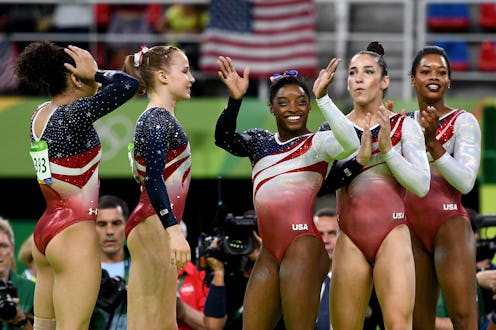News
The Perfect 10 Is No Longer The Benchmark
The Karolyis are making their last Olympic contribution to gymnastics coaching this year in Rio, but something Bela Karolyi will always be remembered for is being the push behind Nadia Comăneci getting a perfect 10 score in 1976. Things are different today, though — back in 2006, the perfect 10 rule was abolished, essentially to both give gymnasts more room to experiment as well as push their boundaries. The new rules, unlike the figure 10, aren't so absolute. So just what is the highest score a gymnast can attain in the Olympics right now?
In 2008, new rules for scoring gymnastics made their debut in Beijing and continued to be used for the 2012 London Olympics. It's a pretty big departure from the perfect 10 method. As reported by The New York Times back in 2008, the departure from the traditional scoring method arrived when the International Gymnastics Federation noticed judging mistakes. They changed the system, in part, to distinguish between the complexities of each routine.
According to USA Gymnastics, the new score is based on two fundamental dimensions: the level of difficulty and technicality and the artistry of the execution. The combination of these two, the difficulty score and the execution score, is what determines the final score (deductions are also used for errors). While it might seem pretty simple to understand, the way these scores are finally decided is actually quite complicated.
Due to its multi-dimensional nature and double panel of judges, assessing the highest score is hard — which is precisely the point of this new system. But the drawback of this is also integral to the new scoring system: the lack of the perfect 10 number means we don't really have a strong, full number to work toward. Back when the new rules were implemented, It drew the ire of Bela Karolyi and Mary Lou Retton, who found this lack of concrete structure in scoring to be confusing.
For example, seeing as the first score takes into account the difficulty of the performed routine, there are gradations based on whether it's a cartwheel or double front layout. To get the most of this score, the gymnast needs to attempt the toughest moves and execute it as well as possible.
So then, the final score, is the sum of these two — which means that based on past Olympic routines, according to a 2008 article by Slate, and excellent scores tend to settle around 16 plus points. While we may not be used to hearing a "perfect 16," this number now represents the new gold medal ideal for gymnastics.
